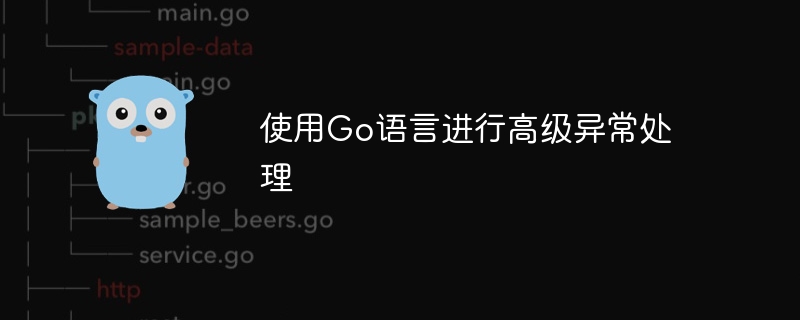
In Go, best practices for handling advanced exceptions include using the try-catch-finally statement to handle exceptions. Create custom error types to provide more meaningful exception information. Pass an error value to track the source of the exception. Use panic and recovery to handle critical errors.

Handling exceptions in Go is crucial, it helps keep your code clean and ensures that when something happens The application will not crash on error. This article will focus on the best practices of advanced exception handling in Go and illustrate it through practical cases.
try-catch-finally Statement try-catch-finally The statement is the standard way to handle exceptions. The try block contains code that may throw an exception, while the catch block is executed after an exception occurs. finally The block is always executed regardless of whether an exception occurs.
func divide(a, b int) (int, error) {
if b == 0 {
return 0, errors.New("division by zero")
}
return a / b, nil
}
func main() {
result, err := divide(10, 2)
if err != nil {
fmt.Println("Error:", err)
} else {
fmt.Println("Result:", result)
}
}Creating custom error types in Go is very simple, just implement the error interface.
type MyError struct {
message string
}
func (e MyError) Error() string {
return e.message
}Custom error types allow you to provide more meaningful information for exceptions.
Passing errors in Go is very important because it allows you to track the source of the exception. Error values can be stored in variables or passed as function arguments.
func getFromDB(id int) (string, error) {
row := db.QueryRow("SELECT name FROM users WHERE id = ?", id)
var name string
err := row.Scan(&name)
if err != nil {
return "", err
}
return name, nil
}
func processUser(id int) error {
name, err := getFromDB(id)
if err != nil {
return err
}
fmt.Println("User name:", name)
return nil
}Panic is a response to a serious error that causes the program to exit unexpectedly. You can use the panic function to cause a panic and the recover function to recover from a panic.
func checkPassword(password string) {
if len(password) < 8 {
panic("password too short")
}
}
func main() {
defer func() {
if r := recover(); r != nil {
fmt.Println("Error:", r)
}
}()
checkPassword("notstrong")
}The following is a practical case of using Go to handle exceptions:
try- The catch statement handles file read errors. Mastering advanced exception handling techniques is critical to writing robust and reliable Go code. By leveraging try-catch-finally statements, custom error types, error delivery, panics, and recoveries, you can handle exceptions efficiently and keep your code organized and easy to maintain.
The above is the detailed content of Advanced exception handling using Go language. For more information, please follow other related articles on the PHP Chinese website!
 Usage of Type keyword in Go
Usage of Type keyword in Go
 How to implement linked list in go
How to implement linked list in go
 What are the Go language programming software?
What are the Go language programming software?
 How to learn go language from 0 basics
How to learn go language from 0 basics
 What are the methods to implement operator overloading in Go language?
What are the methods to implement operator overloading in Go language?
 What are the operators in Go language?
What are the operators in Go language?
 Introduction to dex concept digital currency
Introduction to dex concept digital currency
 asp what file
asp what file